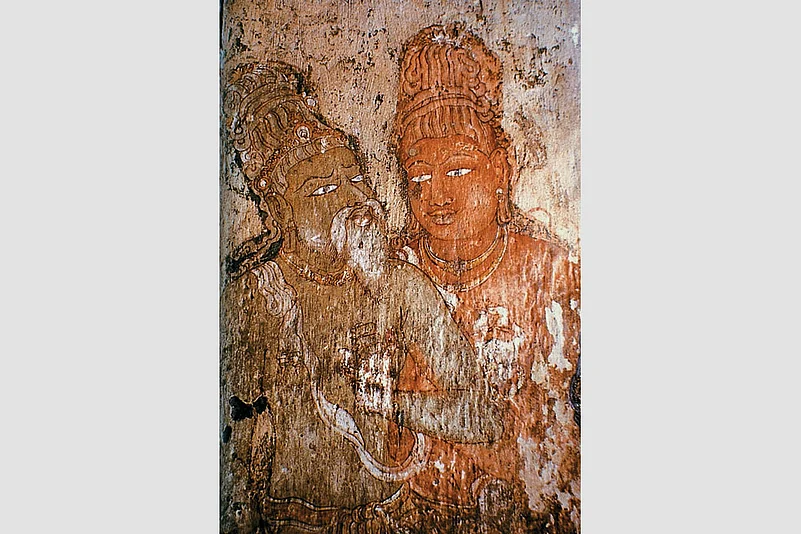Most south Indian cities have a temple at their heart. The one in Tamil Nadu’s Thanjavur, or Tanjore, is a thousand years old. Locals call this stone building Periya Koyil, ‘the big temple’; the scholar David Shulman has termed it a ‘rhapsody to size’. A decade in the making, it was crowned by a gilded finial that stretched its superstructure to 66 metres high—making it for centuries the tallest temple in India. It was the signal architectural achievement of the Chola dynasty, which from the late ninth century to the late thirteenth sustained one of India’s most sophisticated cultures. The ruler who ordered its construction was born with the name Arulmolivarman; but ascending the Chola throne in 985 AD, he became simply Rajaraja—the king of kings. His temple, which stood at the centre of a loosely assembled empire whose influence extended from the Maldives to Indonesia and the South China Sea, was a symbol of his power, his munificence and his proximity to the divine.
“He builds a temple which he modestly names after himself, the Rajarajeshwara temple, and it is really the most magnificent temple of the early eleventh century anywhere in India,” says George Michell, an expert on Indian architectural history. “It stands to this day as a testimony to the financial resources, the architectural magnificence and the artistic skills that Rajaraja could command.” There were important south Indian temples before this, Michell adds, “but suddenly, with Rajaraja, everything gets three or four times larger”.
Nineteenth-century British colonialists found the height quite useful: they mounted a theodolite on the temple’s shimmering spire as part of their quest to survey the Indian landscape. But it must have seemed unearthly to the medieval peasants of the Kaveri river belt who watched the structure rise, block by granite block, over their rice paddies—a great pyramid of tiered stone to evoke the Himalayan abodes of the gods.
I have always wondered if the building of this grand temple was a sign of how uneasy Rajaraja was about his power. He had acquired the throne at a shaky moment in Chola history. The Cholas were one of several south Indian dynasties; about a century before Rajaraja’s birth, these other kingdoms had almost fought themselves into exhaustion, and the Cholas had begun to assert themselves. But when Rajaraja came to power, his kingdom was still recovering from a significant defeat at the hands of rival Kannada rulers. In addition, the realm he governed comprised many networks of local kings and village strongmen; merchant groups, traders and port controllers; Brahmins; and the masses tending the paddy—along with a cacophony of local cults of worship.
Rajaraja had to bring this diverse society under his command without the benefit of a standing army or the sort of octopus-like bureaucracy Kautilya had prescribed. But he succeeded. His genius lay in cultivating a command over the imagination of his subjects—and he did this by creating an inclusive religious and imperial ideology centred on the temple at Thanjavur, which celebrated Rajaraja both as a conqueror and as a devotee of unbounded generosity. The shrine combined his worship of the god Shiva with elements drawn from Vedic Hinduism, southern devotional traditions and popular cults, and served as a metaphor for the unification of south Indian society under his rule.
















